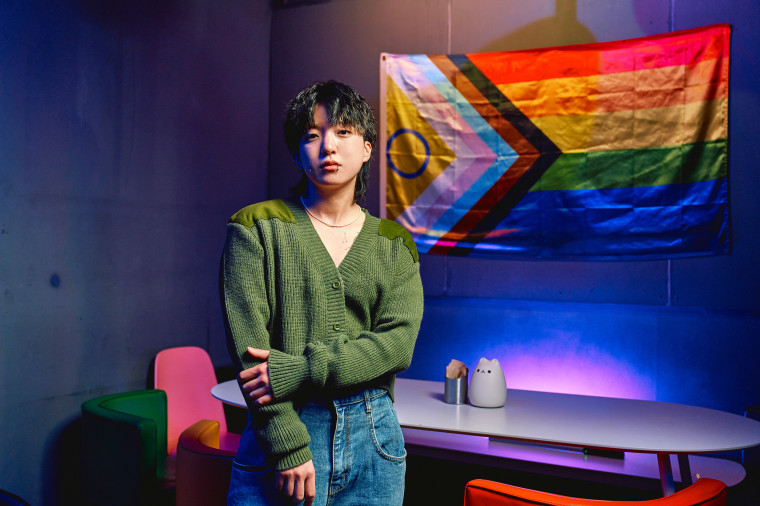
Challenges Facing Turkey’s Queer Art Community

**Navigating the Complex Landscape of LGBTQ+ Art in Turkey: A Struggle for Visibility and Safety**
For many years, Turkey has been a bastion of artistic diversity, balancing between the cultural influences of its rich historical past and the vibrant, expressive nature of its contemporary art scene. Yet, amid intensifying political pressures and growing societal tensions, particularly targeting LGBTQ+ communities, the country’s artists find themselves navigating an increasingly precarious landscape. This situation is especially challenging for queer artists, who are balancing between their drive for creative expression and the harsh reality of state-sponsored homophobia.
In Istanbul, a city that once housed a thriving and visible LGBTQ+ presence, art exhibitions that address queer themes now require intricate strategies to ensure the safety of artists, organizers, and attendees alike. Curator Alper Turan, who collaborated with a spectrum of queer and feminist groups across Turkey, explains the additional burdens that such exhibitions now impose. “To be honest,” he noted, “half of our energy is going towards how we can create some safe space — not just for the organizations involved, the artists, and ourselves, but also for the audience.”
### LGBTQ+ Crackdowns and the Erosion of Istanbul’s Pride Legacy
Since the Turkish government began cracking down on Pride Marches in the mid-2010s, the country’s LGBTQ+ community has borne the brunt of increasingly harsher policies and rhetoric. Most notably, during President Recep Tayyip Erdoğan’s reelection campaign in 2023, homophobic rhetoric took center stage. The situation escalated further with instances like police raids on LGBTQ+ spaces, including a raid on a private party at an LGBTQ+ bar, which led to multiple arrests. The cancellation of Mubi’s Istanbul-based film festival, which was set to feature a movie called *Queer*, starring Daniel Craig, symbolizes the shrinking avenues for public LGBTQ+ art in Turkey.
The consistent targeting of the queer community has not only fostered a toxic social environment but also affected the mental health of artists. Curator Melih Aydemir echoed this sentiment: “Hearing these constant threats, this constant news about the government talking about what evil beings we are, really affects our mental state.”
### Censorship’s Impact on Artistic Work
Artists have long been considered the vanguard of societal change, especially in countries dealing with stringent political climates. In Turkey, queer artists are witnessing both a flourishing of expression within their insular communities and an ever-looming threat from external forces.
One artist collective, *Sınır/Sız* (meaning Border/Less), has maintained a provocative stance in representing LGBTQ+ artists in Turkey. However, the collective acknowledges that aligning their work with overtly LGBTQ+ themes puts them at risk. Artist Şafak Şule Kemancı, a member of the collective, remarks that while many queer artists are finding representation in galleries, they must be careful about promoting these exhibitions during Pride or linking them explicitly to LGBTQ+ issues to avoid unwanted attention.
The fine line between visibility and censorship encapsulates much of the current reality for queer artists in Turkey. Works cannot be political enough to spark government wrath, yet must be creative and impactful enough to engage with the issues that matter most to their identities and communities. This balancing act leads to what many call “self-censorship” – a choice that often keeps artists safe but creatively constrained. Ozan Ünlükoç, the visual coordinator at *Argonotlar*, explains this paradox: “Self-censorship can also be a way to create a feeling of safety in a very insecure environment.”
### Resistance Through Abstract Art and Visual Representation
When expressive works are directly targeted or banned, artists like Furkan Öztekin have had to become creative in their forms of resistance. For instance, Öztekin’s *Resurgence in Fragments*, an installation that displayed everyday objects representing symbols often seen at LGBTQ+ protests — from megaphones to umbrellas — used black-and-white ink to symbolize the public silencing and suppression of queer identities. Color, banned or stigmatized by the authorities, was replaced with monochromatic symbolism.
Turan similarly employed abstraction in his 2021 exhibition *A Finger for An Eye* at the Poşe Artist Run Space, where he instructed artists to avoid depicting human forms, creating an environment where representation was subtle, rather than overt. “I was inviting them to use some abstraction so that there would be no detectable, targetable queer body in this space,” Turan remarked, describing the exhibit as an exploration of alternatives to traditional visibility politics, which, while effective in some contexts, might not create safe environments in all.
These exhibitions underscore the resourcefulness of queer artists who use abstraction, irony, and allegory to promulgate messages of resistance in a climate where overt displays of LGBTQ+ identities invite state-sponsored violence or censorship.
### Support Mechanisms and Future Outlook
While much of Turkish society reels under political and economic stress, LGBTQ+ artists are